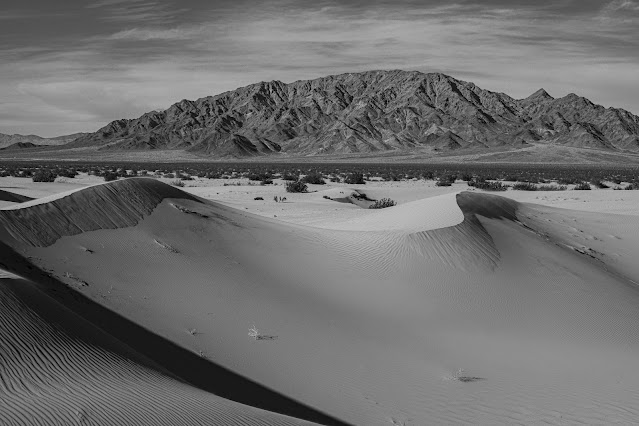Never heard of Archer? Of course you haven't. No one has, because it doesn't exist. But at one time there was a little outpost along a very remote stretch of railroad tracks named Archer. People lived and worked there, kids grew up there, and people died there. Join us while we go take a look to see what's left.
My friend Mitch and I are driving from 29 Palms, going north to Amboy, then east to Chambless (not shown on map), then south through Cadiz and off the map as we follow the old dirt Cadiz Road south. Fingers crossed we don't get stuck in sand or have car trouble, because very few people travel this road anymore.
 |
| Undated post card showing Route 66 and the town of Amboy in its prime. |
I'm relying heavily on Joe DeKehoe's excellent book "The Silence and the Sun" for historic information about Archer. This little outpost in the middle of nowhere had only one purpose: To service the railroad. Archer had a well and its existence was entirely dependent on the need for water by steam engines. Once the railroad switched to diesel locomotive's in the 1950's, Archer was abandoned. About all that is left of Archer today is this old salt cedar tree that appears to be barely alive. You have to get out of your car and walk around to appreciate the incredible feeling of remoteness and isolation out here. There is likely not another human being around for miles.
 |
Look closely to see the remains of an old raptor nest.
|
Archer was probably first occupied in 1910 when Santa Fe records show the well was drilled and the tracks were completed. The population of Archer likely never exceeded more than about 20 people, including children.
There was a one room school house 6 1/2 miles south at a small outpost named Chubbuck (just follow the train tracks). Young children living in Archer would walk 13 miles a day, 5 days a week, to attend school!
Last time I drove Cadiz road was about 8 years ago. I remember posting some pictures of the area on Flickr, and having a fellow Flickr member contact me about an old graveyard somewhere near Archer. He mentioned words like "remote", "unknown", and "fascinating", and I was hooked! He said he may have been the first to discover it and was in the process of contacting BLM to report the find. The thought of that old graveyard had been stuck in my head all these years, and I was determined to find it on this visit. After studying Google Earth for clues, I had a pretty good idea of where to find it.
 |
| Can you spot the old graveyard? |
 |
| I wonder what all these round things are?? |
Of the few people who travel the old Cadiz Road, fewer still will take the unmarked turnoff and follow the unmaintained and overgrown "road" to Archer. What little of Archer is left today is slowly being blown away by the high desert winds common to the area.
Thanks for stopping by!
Mitch and I will be continuing our journey along remote Cadiz road on next weeks post.






















.jpg)

































